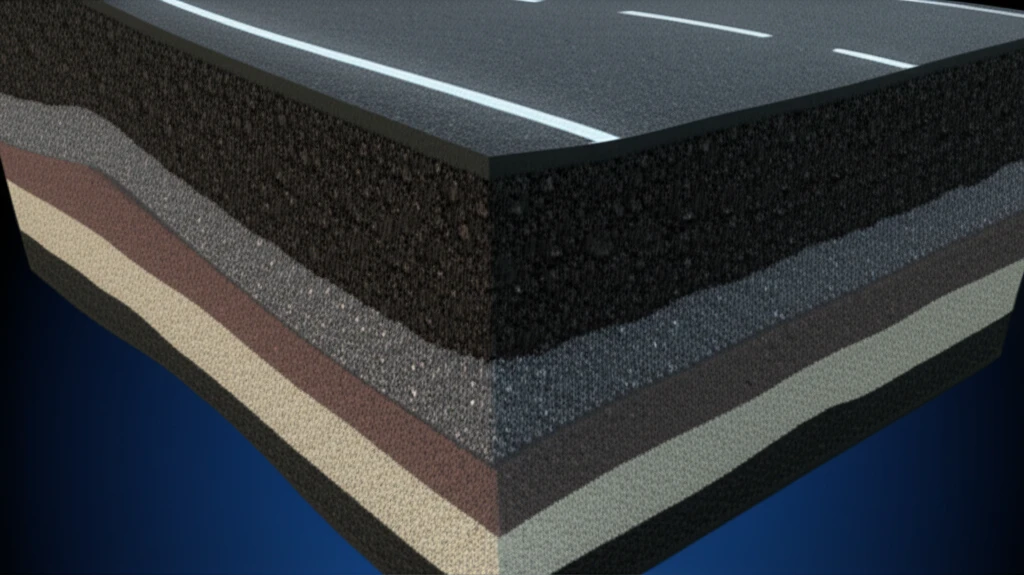
Pavement Perfection: The Secret to Longer-Lasting Asphalt Roads
"Could inverting traditional road base designs be the key to stronger, more durable asphalt?"
Asphalt pavement is a cornerstone of modern infrastructure, but it's no secret that roads are prone to cracking and deterioration. Traditional semi-rigid base courses, widely used in countries like China, often suffer from reflective cracking, where cracks in the base layer propagate up through the asphalt. This significantly shortens the pavement's service life, leading to costly repairs and disruptions.
The conventional approach to road construction places higher-quality materials in the upper base layer, assuming it bears the brunt of the load. However, recent research suggests this might be a flawed strategy. The lower base layer actually experiences greater tensile stress, making it more susceptible to cracking and failure. This mismatch between material strength and stress distribution is a critical issue.
Now, imagine a road design that flips this conventional wisdom on its head. This article explores the concept of an "inversed structure" for asphalt pavement, where stronger materials are strategically placed in the lower base layer to better withstand tensile stress. We'll delve into the research behind this innovative approach, examining how it can improve pavement performance, extend service life, and potentially reduce long-term maintenance expenses.
Inverted Pavement: A Structural Revolution?

The traditional asphalt pavement structure, commonly used, typically consists of two semi-rigid base courses. The upper base usually boasts superior raw materials, finer gradation, and a higher cement content compared to the lower base. This assumes the upper layer handles the majority of the stress. However, using software like BISAR3.0, researchers analyzed the load responses within these pavements and uncovered a surprising trend: the lower base layer is under more tension.
- Higher Tensile Stress: The lower semi-rigid base layer bears greater tensile stress than the upper layer.
- Fatigue Life Dependency: The pavement's overall fatigue life hinges on the performance of the lower base.
- Material Mismatch: Using inferior materials in the lower base and superior materials in the upper base is an illogical approach, given the stress distribution.
The Road Ahead: Building Smarter, Stronger Pavements
The research clearly demonstrates the potential of inversed pavement structures to improve the durability and longevity of asphalt roads. By strategically placing stronger materials in the lower base layer, engineers can create pavements that are better equipped to withstand tensile stress and resist cracking.
This innovative approach not only extends the service life of roads but also offers significant economic benefits. Reduced maintenance frequency translates to lower costs for repairs, less disruption to traffic, and a more sustainable approach to infrastructure management.
As we look to the future of road construction, embracing innovative designs like the inversed pavement structure is crucial. By combining structural design with intelligent material selection, we can build smarter, stronger, and more durable roads that stand the test of time.
